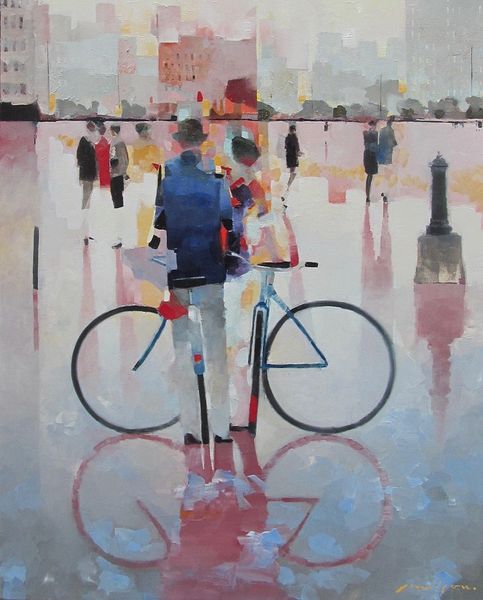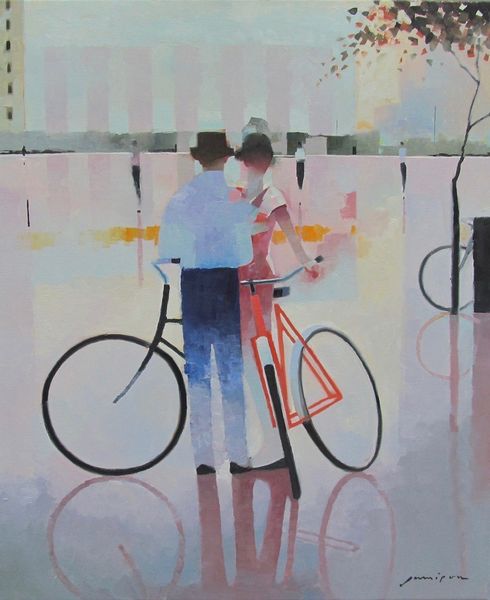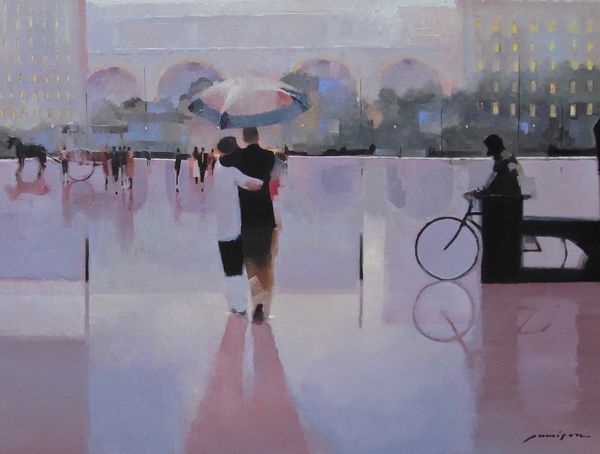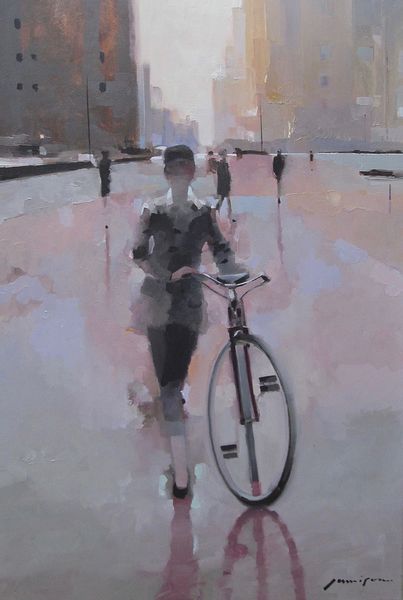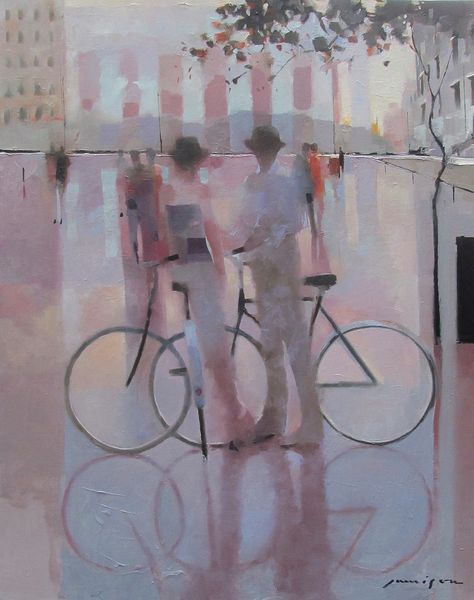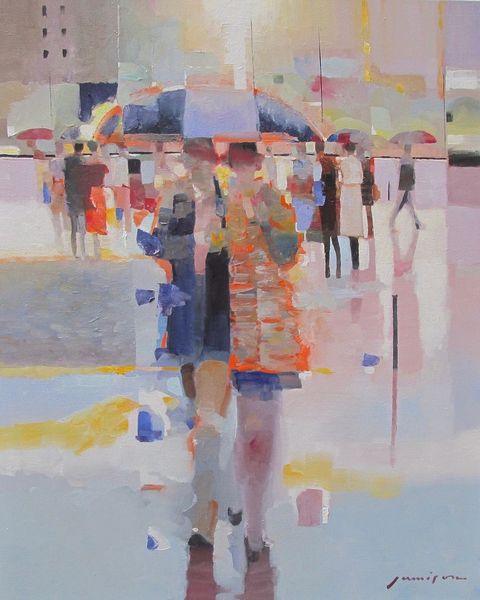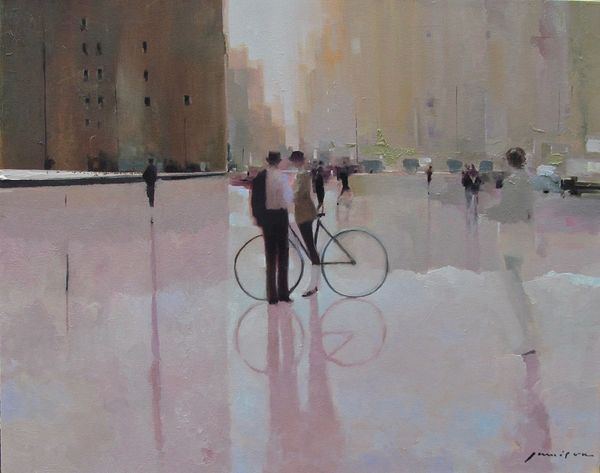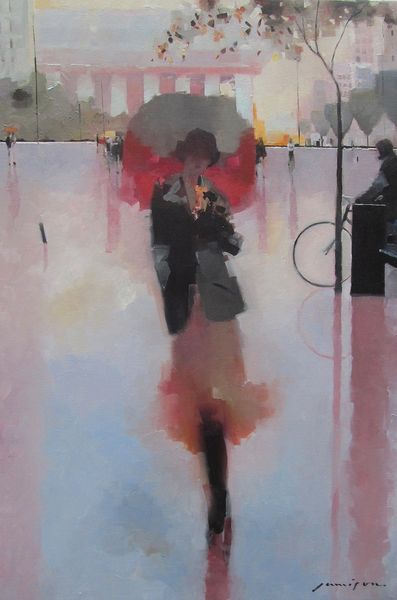
plein-air, acrylic-paint, impasto
#
portrait
#
acrylic
#
impressionism
#
plein-air
#
landscape
#
acrylic-paint
#
figuration
#
oil painting
#
impasto
#
neo expressionist
#
street photography
#
cityscape
Copyright: Modern Artists: Artvee
Curator: Looking at Jeff Jamison's painting, "Dual Perspective," what immediately strikes you? Editor: The heavy impasto – you can almost feel the physical presence of the acrylic paint on the canvas, giving it an intriguing texture that feels simultaneously solid and dreamlike. Curator: The interplay between solidity and transience resonates well with the figures. Note how Jamison employs elements of Impressionism and plein-air techniques to depict these individuals interacting within an urban landscape. It conjures a feeling of modern alienation, don't you think? Editor: It's interesting that you read alienation into it. To me, the softness of the acrylic and the blurred figures are less about loneliness and more about capturing a fleeting moment. How does that reading tie into broader symbolisms you see? Curator: Consider the faceless figures, seemingly anonymous, and yet together in a cityscape that echoes across different planes and angles, creating layers of depth that imply an ever-present cultural memory. It speaks of individual erasure amidst a larger, historically grounded community, perhaps a commentary on the loss of personal identity in modern urban life. Editor: That interpretation makes sense. The painting almost flattens the individual. Even with impasto, the strokes remain largely unblended and uniform across both the human and built environment, suggesting that figure and setting are materially the same. This equality suggests that individual essence is a modern commodity. Curator: Yes, an element to commodification. Moreover, the placement of the bicycle, bisected between the figures, has particular symbolic significance. A shared ride becomes a loaded meeting, fraught with expectation. Editor: Absolutely. This connects to Jamison’s larger style. How the medium's inherent potential is explored. Does the weight of paint symbolize some social barrier to true connection? The artwork’s impressionist aesthetic suggests otherwise. The materiality itself hints towards certain contemporary narratives of class or connection. Curator: A powerful assessment. "Dual Perspective" invites such contemplation on connection, erasure, and what shapes communal memory in the landscape. Editor: It’s truly fascinating to consider what appears to be an artless rendering actually being so laden with meaning via method.
Comments
No comments
Be the first to comment and join the conversation on the ultimate creative platform.
